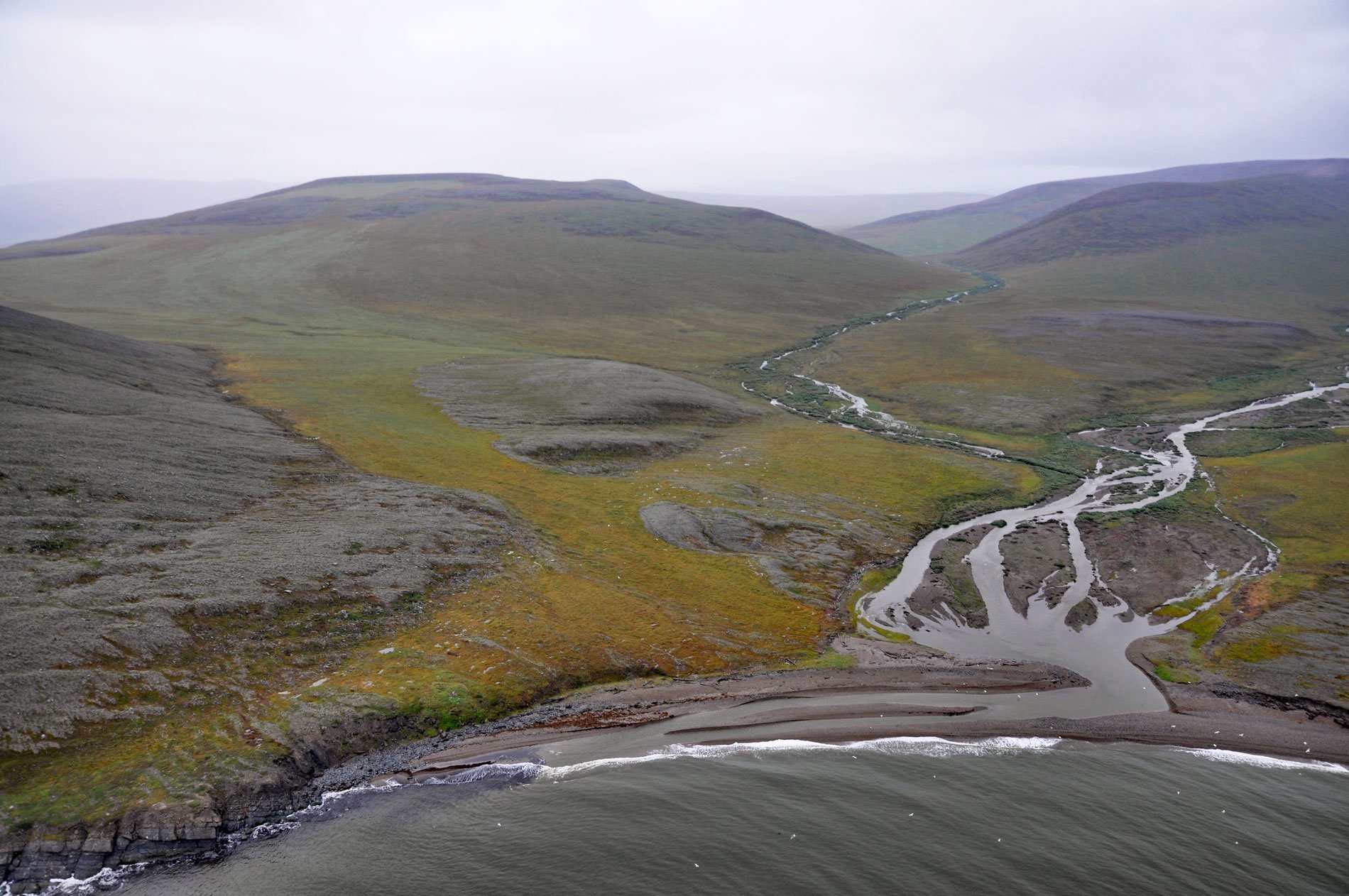Kapaloak Creek starts from an elevation of roughly 1200 feet (366 m) in the Lisburne Hills and flows generally west for 8.5 miles (14 km) to Cape Dyer on the Chukchi Sea and the site of a historical Iñupiat village, about 110 miles (177 km) southwest of Point Lay and 25 miles (40 km) north-northeast of Point Hope, Alaska. The creek was named in 1904 by Arthur J. Collier of the U.S. Geological Survey after the abandoned settlement which he called ‘Capaloa’. The current spelling is from John B. Driggs, a physician and Episcopal missionary at Point Hope from 1890 to 1910. Cape Dyer was named in 1827 by Frederick W. Beechey on the HMS Blossom while tasked to explore the Bering Strait from south to north in concert with Captains John Franklin and William E. Parry who were exploring the Arctic coast from east to west. The Lisburne Hills are between Cape Dyer to the north and the Kukpuk River to the south and represent rocks of the Iviagik group that developed between the Silurian and Ordovician. The rocks consist of slaty black argillite and shale overlain by sand-rich turbidite deposits.
The Ipiutak culture at Point Hope started to dissipate around 900 AD and was subsequently filled after 1000 AD by the Birnirk people who employed sophisticated technology to hunt bowhead whales from Point Hope and other strategic locations along the coast. They also made use of the abundant argillite or ‘black slate’ for stone tool manufacture as well as coal. The Birnirk people are the presumed ancestors of the Tikiġaġmiut people who around 1800 AD, controlled a territory that extended from Cape Thompson in the south to near Cape Beaufort in the north and was centered at the main village of Tikiġaq at present-day Point Hope. Satellite villages were scattered along the coast strategically positioned to take advantage of seasonal food sources. In most coastal locations, walrus were typically available during the early summer and fall, beluga whales appeared in the spring and summer, and seals were hunted throughout the year. Land mammals were also hunted including caribou, sheep, bear, and foxes. Birds nested in the cliffs by the thousands and their eggs were collected from rock ledges in July.
During the 19th century, the Tikiġaġmiut population declined due to internecine warfare mostly against Noatak and Kivalina people, the collapse of marine mammal populations due to exploitation by Russian fur traders and American whalers, and the introduction of communicable disease, alcohol, and firearms. In 1900, influenza precipitated the greatest mortality among the Tikiġaġmiut, although there was no immunity from other diseases such as measles, smallpox, mumps, and rubella. During the historic period dating from Russian contact in 1741, these diseases became introduced into previously remote sectors of Alaska by Euro-Americans, often causing epidemic outbreaks in susceptible local groups. Measles ravaged the Aleutian lslands and portions of the Alaska Peninsula in 1848, and Kodiak Island in 1875, but it was not until 1900 that the virus reached western Alaskan populations. Unlike measles, influenza, and influenza-like outbreaks occurred frequently within western Alaskan communities during the second half of the 19th century, often arriving in summer with Euro-American whalers and merchant ships from southern latitudes. However, the particular influenza that appeared in 1900 may have represented a relatively novel strain, as evidenced by the universal susceptibility of the Native Alaskan population. Read more here and here. Explore more of Kapaloak Creek and Cape Dyer here:

